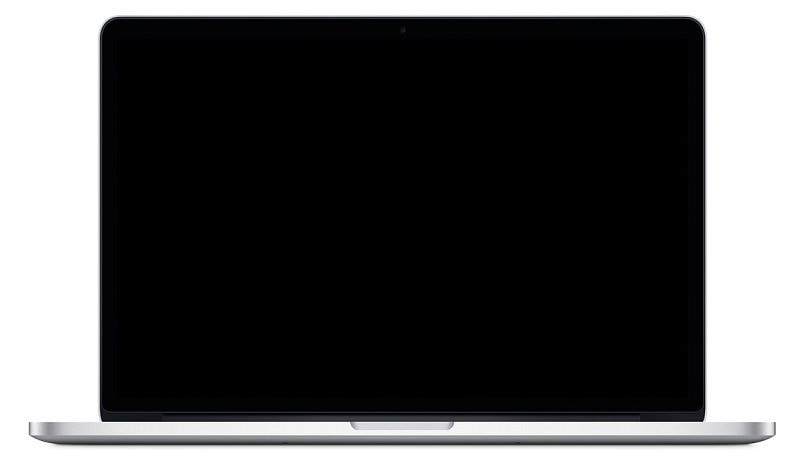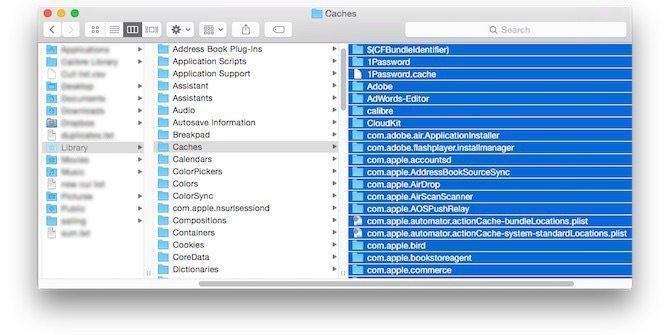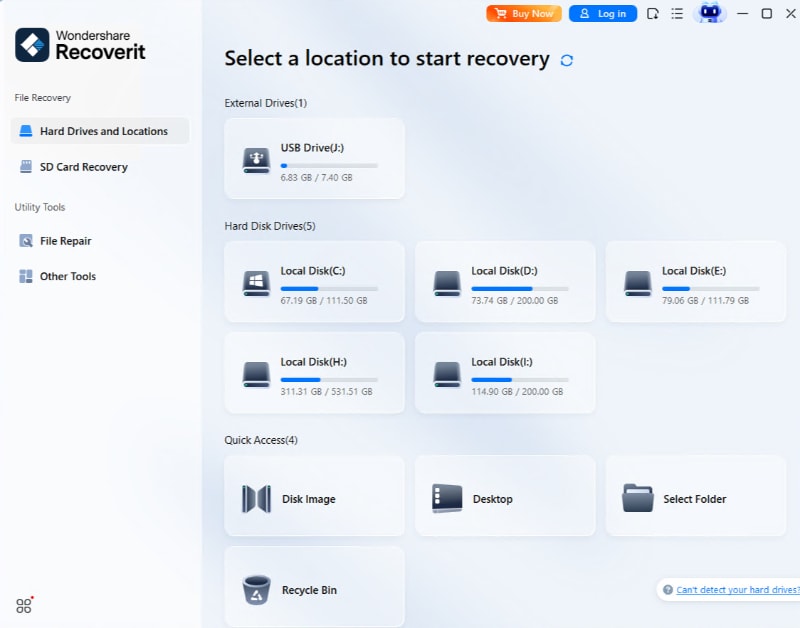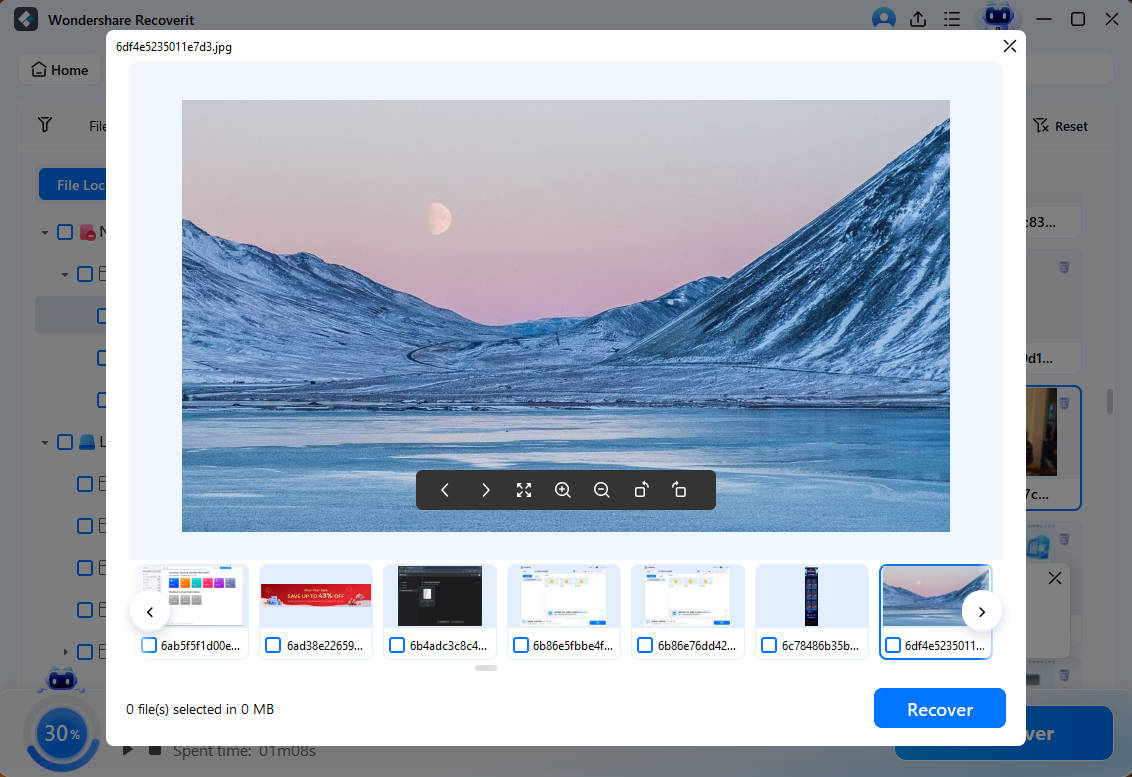How to Fix Frozen Mac Screen | Gray, Black, White, or Green Screen
"My Mac is frozen on the startup screen and isn't responding to any command. How to fix the MacBook Pro screen issue without causing any unwanted damage?"

If a similar query about Mac's screen malfunction has brought you here, then this would probably be the last guide that you will read. It doesn't matter if your Mac has got a white, black, gray, or green screen of death – there is an ideal solution to every issue. Instead of spending a huge chunk of money by going to a technician, take a step back, and try to fix the Mac screen on your own. In this guide, we will tell you how to fix the MacBook frozen screen issue in every possible way.
Part 1. Common Ways to Fix Mac Frozen Screen
It doesn't matter if your Mac is stuck on the loading screen or whether it has got a white screen of death – some solutions seem to fix Mac screen frozen issues of all kinds. Before we discuss various issues and solutions individually, let's quickly consider some recommended solutions, suggested by the leading experts.
Solution 1: Disconnect all peripheral devices
As surprising as it might sound, this is the easiest fix to a Mac screen frozen issue. If you are using a third-party peripheral device (like a Bluetooth speaker or mic), then it can tamper with the booting of the system at times. Simply remove all the peripheral devices and only connect a mouse and keyboard to your desktop (genuine Apple products). Once it is done, try to restart Mac and check if it boots normally or not.

Solution 2: Forcefully restart Mac
If your Mac is stuck on the loading screen or has got a white/black/gray screen of death, then you can consider turning it off. If there was a minor issue with the firmware, then a forceful restart would fix it. This will reset the present power cycle of the system and let you get back full control of it.
- To forcefully turn off Mac, press and hold the Power key. It is mostly located at the top of the keyboard.
- If it won't work, then you can just remove the battery of your notebook or disconnect the main power supply of the desktop as well.
- Wait for at least 15-20 seconds and press the Power key again to turn it on.

Solution 3: Boot Mac in a Safe Mode
If there is a problem related to a certain process or application in your Mac, then you should consider booting it in the safe mode. This will restart your system without any unwanted third-party or network process running in the background. Furthermore, it will help you diagnose the reasons behind Mac Pro frozen screen as well.
- Turn off your Mac if it isn't already. Now, press the Power button to start it.
- Press and hold the Shift key as your Mac would turn on. It will automatically boot in the safe mode instead of the normal mode.
- Just log-in to the administrator account and let the system boot correctly.

Solution 4: Reset PRAM
PRAM, which stands for Parameter Random Access Memory, is one of the major components in Mac. Apart from handing other vital system processes, it is also responsible for Mac's booting too. Therefore, if you have got a black, white, or gray screen on Mac, then you should consider resetting its PRAM first.
- Firstly, turn off your Mac by long-pressing the Power switch and wait for a few seconds.
- Turn it on and press the P + R + Option + Command keys at the same time as Mac restarts.
- Keep holding them until your Mac would restart. Once you hear the startup chime for the second time, release the keys. This means the system has been started with new PRAM settings.

Solution 5: Repair the Startup Disk
Most of the time, an issue like Mac stuck on a login screen usually happens due to a corrupt or malfunctioning disk. Since Mac lets us repair a disk on its own, you can take the assistance of Disk Utility to do the same. Here's how you can fix Mac black/white/green screen by repairing its startup disk.
- Turn on your Mac or restart it if it is already power on.
- As it restarts, press and hold the Command + R keys at the same time for a few seconds.
- This will boot your system in the Recovery Mode and launch the macOS Utilities window. Select the "Disk Utility" option from here.

- As a dedicated window of Disk Utility would open, choose the startup disk from the sidebar.
- Now, select the "First Aid" option on the toolbar to repair the disk and confirm your choice by clicking on the "Run" button.
- Wait for a while as Disk Utility would try to repair Mac's startup disk. Once it is done, you can boot Mac in the normal mode.

Part 2. How to Fix Mac Frozen with White Screen
If you are lucky, then you would be able to fix the Mac screen frozen by following the above-listed general suggestions. Though, there are times when we need to look for specific fixes for issues like Mac white screen. The situation happens mostly while booting when instead of loading the firmware, the system displays a plain white screen on the monitor. Let's get to know about the major causes of Mac being stuck on a white screen with proven ways to fix it.
Causes of Mac White Screen
- Improper shutdown of the system before
- A missing firmware or booting component
- Issues with Mac hardware or peripheral devices
- Corrupt disk or startup media
- SMC (System Management Controller) has been corrupted
- A clash between different users and processes
Solution 1: Troubleshooting via Verbose Mode
If you want, you can simply boot Mac in a Verbose Mode. This will let you diagnose the problem with your system so that you can subsequently fix it. It is similar to a single-user terminal mode in Mac, but with detailed options. Here's how you can fix MacBook frozen with white screen by booting it in Verbose Mode.
- Turn on the Mac if you are using it already. Wait for a while and press the Power key to start it.
- During the startup, press and hold the Command + V keys for a while. This will boot your Mac in Verbose mode.
- If FileVault is enabled, then you can just release the keys when the log-in screen would appear.

Solution 2: Launch Startup Manager
A wrongful booting can also be the reason for getting a situation like Mac stuck on a white screen. To fix this, you can launch the Startup Manager and manually select the startup disk on Mac. You can also take its assistance to boot Mac from an external media. Furthermore, if you have more than one operating system installed, then this will help you fix the Mac white screen in this situation as well.
- Restart your Mac if it isn't already. If you have got it on, then turn it off first.
- Now, press and hold the Option key as soon as you hear the startup chime. This will launch the Startup Manager on your Mac.
- Simply select the startup drive or any other bootable media to continue.

Part 3. How to Fix Mac Frozen with Gray Screen?
Apart from getting a Mac white screen, some users also complain of having a gray screen during the startup as well. Mostly, the display changes from blue to gray and halts the processing of the system. Also, the problem is more common in notebooks with a Retina Display.
Causes of Mac White Screen
- Network connection issue with Mac
- Malfunctioning peripheral device
- Corrupt macOS installation
- Problem with the display or another hardware component
- Essential booting files can't be loaded
Solution 1: Remove the battery
If you have a notebook with a removable battery, then this is the first thing that you should do. A lot of times, we get a MacBook Pro frozen with grey screen due to battery-related issues. Simply turn off the system once and wait for a while. Now, remove the battery and attach it back again after waiting for a few seconds. Turn on the Mac once you have inserted the battery correctly.

Solution 2: Boot Mac in a Single Mode
This is another smart solution to fix the MacBook Pro grey screen of death. We can boot Mac in a single-mode by using the correct key combinations. This would launch a Terminal window for single-user access. Later, you can use the right commands to check the disk and resolve the MacBook grey screen problem.
- Turn on your Mac and press the Command + S keys to boot it in a single user mode.
- Let go once the Terminal screen will appear. This means your Mac has been booted in a single user mode successfully.
- Now, enter the command "fsck –fy" and press enter. The File System Check command will automatically scan the disk and resolve any unwanted issue in it.
- Afterward, type the following two commands and press enter: mount –uw, touch /private/var/db/.AppleSetupDone
- Once it is done, type "exit" to leave the Terminal and restart Mac. Press and hold the Shift key to restart it in the Safe Mode. Most likely, this will fix the Mac gray screen issue.

Part 4. Specific Ways to Fix Mac Green Screen
While the MacBook Pro green screen situation is not as common as the white or gray screen problem, it can occur unexpectedly. Mostly, users get the green screen on Mac due to a hardware related problem. Though, some firmware or bootloader glitch can also result in the same.
Causes of Mac Green Screen
- A malfunctioning hardware component
- Lack of available free space on Mac
- Can't locate the booting files
- Mac trying to access unavailable data
- Screen driver missing
- Malware attack on the system
Solution 1: Delete Mac Trash and Cache
If the startup disk of your Mac has been stuck with too much data, then it can make your system's screen green. To fix this, you can first boot your Mac in the safe mode and later get rid of its trash, cache, and other unwanted data.
- Turn on your Mac and hold the Shift key to boot it in the Safe mode.
- Log-in to the administrator account and select the Trash icon on the dock. Right-click and choose to securely empty the trash.

- Similarly, go to Finder on Mac and visit the Library > Caches folder. From here, you can get rid of all the unwanted cache on your Mac.
- Besides that, you can also remove the temp and log files from Mac too. In the end, restart it in the normal mode.

Solution 2: Run Hardware Diagnostics
Faulty hardware could be one of the major reasons for causing the Mac green screen of death. The good thing is that Apple allows us to run a thorough hardware test to resolve unwanted issues like this.
- Disconnect all the peripheral devices and even the Ethernet link from your Mac before you proceed. Make sure that only minimal external devices are linked to it.
- Turn on or restart your Mac after getting the green screen on it. This time, press and hold the D key during the startup process. Let go of it when you see the hardware test logo on the screen.

- In no time, this will launch a dedicated hardware test interface. If you want, you can enable the option to do an extensive check here. Click on the "Test" button to run a thorough diagnostics.
- Wait for a while for the test to process and simply view the results. In this way, you can get rid of any faulty component. Once you are done, click on the "Restart" button to boot Mac normally.

Part 5. How to Fix Mac Frozen with Black Screen
Ideally, hard drives can either be of two types – HDD (Hard Disk Drives) or SDD (Solid State Drives). With the advancement in time, most of the systems use HDD these days. Since Mac also supports HDD, you can easily take its assistance to format a hard drive as well. Once you have erased the existing data, you can get rid of its partitions as well to completely wipe it. Here's how to reformat Mac HDD without using a third-party tool.
Causes of Mac Black Screen
- A corrupt or incomplete version of macOS installed
- Lack of resources in the system available
- Firmware-related issues
- Can't find the bootloader
- Corrupt startup disk
- Can't locate the startup disk
- A low battery or no power
Solution 1: Reinstall macOS
If your system is running on an outdated, bad, or corrupt macOS version, then it can lead to issues like the Mac black screen of death. The easiest way to fix the Mac screen would be booting your system in Recovery Mode and installing an updated version of macOS in it.
- Restart your Mac or power it on if it isn't already. While it boots, press and hold the Command + R keys for a while. This will boot it in the Recovery Mode.
- This will automatically launch the macOS Utilities window on the screen. Click on the "Reinstall macOS" option.
- Simply follow the on-screen instructions to install an updated version of macOS and restart your system.
Solution 2: Reset SMC on Mac
The System Management Controller is a specially designed chip in Mac computers, which is responsible for a wide range of activities. It can communicate with other devices, do battery management, and is even responsible for macOS booting. Therefore, if Mac's screen has been stuck, then you can try to reset SMC on it.
For Mac Desktops
- Turn off the system and remove its main power cord.
- Wait for 15 minutes before connecting the cord again.
- After waiting for 5 minutes, turn it on.
For MacBooks (non-removable battery)
- Firstly, make sure that your MacBook is switched off. If not, power it off.
- Press and hold the Shift + Control + Option keys on the left side of the keyboard.
- Afterward, press the Power key and hold all the 4 keys for another 10 seconds.
- Let go, wait for a while, and press the Power key again to turn on Mac.

For MacBooks (with removable battery)
- Power off Mac and remove its battery using the right equipment.
- Press and hold the Power key for at least 5 seconds.
- Let go of the Power key, connect the battery again, and turn it on.
For MacBooks with the T2 Chip
- Beforehand, turn off your Mac and wait for a while.
- Now, press the Shift key on the right side of the keyboard and the Option + Control keys on the left side.
- Hold them for the next 7 seconds. Afterward, press and hold the Power key while still holding them.
- Hold all the four keys for the next 7 seconds and let go. In the end, press the Power key to start Mac normally.

Video Tutorial on How to Fix Grey Screen at Startup on Mac
Part 6. How to Fix Mac Stuck on Loading Screen
When we turn on a Mac, it first displays a macOS loading screen. Though, there are times, when Mac gets stuck on the loading screen and doesn't seem to respond at all. If your Mac screen is also frozen, then consider the listed suggestions to fix it.
Causes of Mac Stuck on Loading Screen
- SMC or PRAM component is stacked
- Unavailable resources
- Startup disk can't be located
- Mac disk has been corrupted
- Malware attack on the system
- Corrupt startup application or process
- Kernel panic or deadlock
- Outdated firmware
- No or minimum free space left on Mac
Solution 1: Perform Internet Recovery
This is one of the best features of macOS that lets us get help online to fix issues like Mac stuck on the loading screen. All you need to do is boot your Mac in the recovery mode and start the internet recovery process.
- Restart your Mac and press the Command + R keys during the startup process. Keep holding them until it boots in the Recovery Mode.
- From the list of the available macOS Utilities options, click on "Get Help Online".
- Wait for a while and maintain a stable network connection as the Internet Recovery screen will load. Just follow simple instructions to troubleshoot the Mac stuck on the loading screen issue.

Solution 2: Use Terminal
If you want, you can also check the file system on Mac using Terminal. This will further diagnose the issue and can even fix it as well. Since you can't access Terminal the usual way, you need to boot Mac in the Recovery Mode first.
- Power on the system and press the Command + R keys while Mac starts.
- This will boot Mac in the Recovery Mode and presents the vital options. Go to the main menu > Utilities and launch Terminal from here.

- Now, enter the command "/sbin/fsck –fy" and press enter to check the file system.
- If the output is okay, then exit the Terminal and restart Mac. Otherwise, enter the same command again until you get the desired results.
Part 7. How to Recover Data from Crashed Mac
If you are getting white, black, green, or gray screen of death on your Mac, then you might end up losing your important files. If this is the case, then you should consider using Recoverit Data Recovery on Mac. With it, you can get back all kinds of lost and inaccessible data on your Mac in no time. The basic version of the tool is available for free, which comes with a data limitation. If you want to recover unlimited data, then you can just upgrade to its pro or ultimate version.
- Recoverit features a highly advanced algorithm that can recover all kinds of lost data from numerous sources in less time.
- It supports the recovery of all sorts of disk formats like APFS, HFS+, NTFS, exFAT, etc.
- Furthermore, it is compatible with more than a thousand different data formats for content like photos, videos, documents, and more.
- You can get back your lost data under all the common scenarios. This includes a corrupt Mac, unresponsive device, formatted disk, accidental deletion, and so on.
- With the Ultimate version of the tool, you can even create a bootable media and perform data recovery on a malfunctioning system.
Since the tool is extremely easy to use, you don't need any prior technical experience to make the most of it. All you need to do is follow these basic steps:
Step 1: Select a Location
Once your Mac starts in the normal mode, install and launch Recoverit Data Recovery on it. Firstly, you need to pick a location to scan from its home. You can pick the entire disk or any drive/partition of your choice.

Step 2: Scan the Location
Click on the the disk and wait for a while as the application will extract all the vital content from your Mac that you have lost. Try not to close the application in between to get the best results.

Step 3: Preview and Recover
When the process is successfully completed, the application will notify you. Now, you can preview the extracted content on its own interface like photos, videos, documents, etc. All you got to do is select the files you wish to save and click on the "Recover" button in the end.

Conclusion
That's a wrap, folks! I'm sure that after reading this extensive guide, you would be able to fix your Mac screen from all kinds of issues. The post has included general as well as specific fixes for frozen Mac screen. Furthermore, you can take the assistance of a recovery tool like Recoverit to get back all types of deleted and lost data on your Mac. It is a freely available data recovery application that is known for its high recovery rate. Apart from Mac, you can also use it on Windows or to perform data recovery on an external device as well.
What's Wrong with Mac
- Recover Your Mac
- Fix Your Mac
- Delete Your Mac
- Learn Mac Hacks


























 ChatGPT
ChatGPT
 Perplexity
Perplexity
 Google AI Mode
Google AI Mode
 Grok
Grok
























Sue Wayne
staff Editor